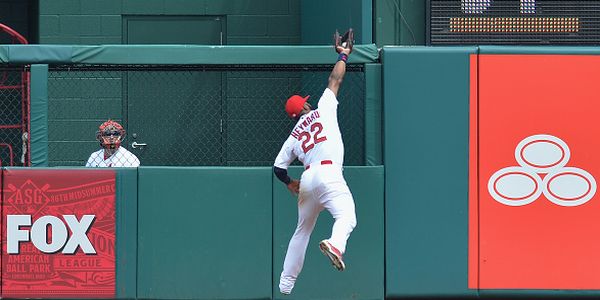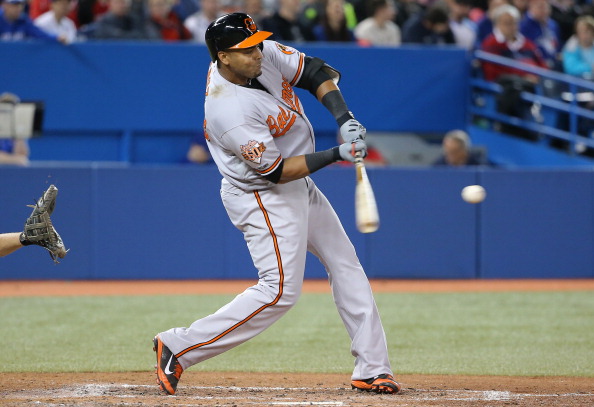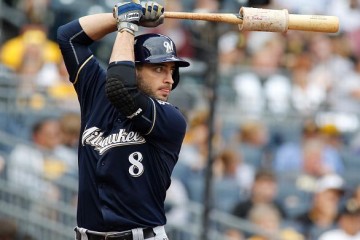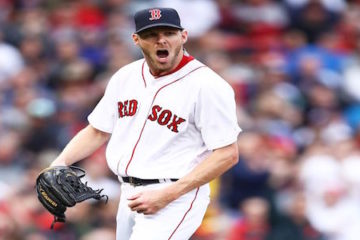2015 Fantasy Baseball: The Fielding Chronicles — Right Fielders

Why should I read this article?
We’ve come to the end of the fielding chronicles. I hope you’ve at least gotten some solid information out of them. If you are joining us for the first time, I’d point to the same thing that I’ve pointed to before. Most of the players with 2000 or more innings are positive impact fielders. That means that teams generally don’t allow sub-par fielders to get to that many innings. In other words, unless you are a dominant hitter, you’d better be okay at fielding your position.
The upshot in the outfield is that players that fail as center fielders normally get moved to right or left field. While the strategy of moving your worst player to right field may not hold in the big leagues like it does in little league, we will see some of that here. Generally speaking though, if you want to hang around and get on the lineup card, you’d better at least be proficient.
How does this fielding thing work?
We utilize The Fielding Bible by John Dewan to evaluate our fielders. Ironically, he began his work in 2003 and we will notice two players (Torii Hunter and Carlos Beltran) that actually began playing before that date. So, their numbers will represent what they have done since 2003. Billjamesonline.com keeps track of these numbers on a daily basis.
The Fielding Bible expresses their numbers in defensive runs saved (DRS). Video scouts calculate the number of plays a player should make based on the balls hit into his zone and the perceived difficulty of those plays. If a player makes more plays than expected then he has a positive rating and a DRS over zero. If he makes fewer plays than he is expected to then he will have a negative rating and a DRS under zero.
I happen to like the fielding bible system because it has more transparency than the other fielding system. You can see different kinds of plays a right fielder must make (coming in on a ball, going back on a ball, throwing, ect.) and see what he is particularly good at or lacking in. We will not get into that much detail here.
The Elite
| Innings | DRS | DRS/1000 | 2014 | |
| Jason Heyward | 6099 | +99 | +16.23 | +32 |
| Josh Reddick | 4380 | +58 | +13.24 | +13 |
| Shane Victorino | 9717 | +70 | +7.20 | +1 |
| Yasiel Puig | 2167 | +14 | +6.46 | +2 |
| Giancarlo Stanton | 5837 | +33 | +5.65 | +7 |
| Alex Rios | 13370 | +69 | +5.16 | -3 |
Jason Heyward and Josh Reddick are similar players in the sense that they are transcendent fielders and flawed offensive players. Like others at other positions (Manny Machado, Nolan Arenado, Andrelton Simmons) some people overvalue them in fantasy circles because they allow their fielding value to bleed into their fantasy value. This is particularly true in Heyward’s case because he will be a free agent after the season.
On the flip side, players like Yasiel Puig and Giancarlo Stanton are often underrated because people don’t think of them as elite fielders. Stanton certainly doesn’t look like he would be an elite fielder, but he just makes plays. Sure, his batting average is low, but otherwise he packs as much value into his game as the Harpers and the Trouts.
Alex Rios is certainly not on the level of Alex Gordon and Lorenzo Cain (he is also hurt), but the three combined make for the best defensive outfield in baseball. As we saw in the previous article, this helps all of the fly ball pitchers on the staff. You’ll notice that a number of their pitchers are outperforming their peripherals. That’s not an accident.
The Second Tier
| Innings | DRS | DRS/1000 | 2014 | |
| Jeff Francouer | 10704 | +50 | +4.67 | +1 |
| Travis Snider | 3570 | +16 | +4.48 | +4 |
| Jay Bruce | 8599 | +31 | +3.61 | -8 |
| Ryan Braun | 8613 | +20 | +2.32 | -7 |
| Carlos Beltran* | 12819 | +27 | +2.11 | -6 |
| Torii Hunter* | 14129 | +28 | +1.98 | -18 |
| Jayson Werth | 10367 | +18 | +1.74 | -4 |
| Nick Markakis | 12162 | +4 | +0.33 | +1 |
- asterisks represent only the numbers compiled since 2003.
Usually, any mention of Jeff Francouer would come with a trail of snark across the internet. He just might be the Rasputin of baseball. Every time you think he’s played his last major league game he just shows up in someone’s outfield. I think we can begin to see why. Yes, he is a very flawed offensive player, but he also produces 20+ home runs when he gets a full season’s worth of plate appearances. When that happens he also provides above average defense. That might not be much to write home about, but when a team just wants to plug a hole, you could do worse.
As noted above, Torii Hunter and Carlos Beltran’s numbers are truncated. According to baseball-reference.com, Beltran had an additional 25 runs saved between 1998 and 2002. They don’t use the exact same formula as the fielding bible, but it is similar. Officially, he has logged over 17,000 innings in the outfield. That is a remarkable sum for someone that has been injury prone for parts of his career.
Torii Hunter only had nine additional runs saved between 1997 and 2002, so his per 1000 inning is pretty consistent when we look at his whole career. He has over 18,500 defensive innings in his career. Cooperstown may not be calling either of them home, but both of them will definitely be in the conversation when their careers are done.
The Trailers
| Innings | DRS | DRS/1000 | 2014 | |
| Hunter Pence | 10801 | -9 | -0.83 | -2 |
| Seth Smith | 4752 | -5 | -1.05 | +6 |
| Jose Bautista | 6209 | -10 | -1.61 | -6 |
| Nelson Cruz | 7340 | -17 | -2.32 | +3 |
| Nick Swisher | 8039 | -22 | -2.74 | -2 |
| J.D. Martinez | 3167 | -12 | -3.79 | -1 |
| Shin-Soo Choo | 7996 | -31 | -3.88 | -13 |
| Michael Cuddyer | 7753 | -64 | -8.25 | -2 |
| Matt Kemp | 9513 | -85 | -8.94 | -23 |
Matt Kemp embodies the normal progression for center fielders that can’t play their position. It’s comical that he once won a Gold Glove award. That demonstrates more than anything that the Gold Glove award process is a farce. He may turn out to be a decent right fielder in time. The Padres aren’t completely crazy for putting him there.
On the other hand, Michael Cuddyer is a unique player. He has played every position except shortstop and catcher, and he can’t field any of them competently. He has a negative seven runs at first base, a negative twelve runs at second base, and a negative twenty-four runs at third base. Add up all of those and you get -105 runs total defensively. I’m not even sure we can call him a jack of all trades. I suppose we could laud him for his versatility and consistency, but it’s been consistently bad.
Some of the others had spent time in center field like Kemp, so it’s a little too early to call any of them bad defensive right fielders. Some of them took one for their team like Shin-Soo Choo. The Reds put him in center field even though it was established that he really couldn’t play there. Sometimes you just have to make sacrifices I guess. Most teams won’t do that though and that is why it pays to pay attention to fielding numbers. It will give you a bird’s eye view of why some guys play and others don’t.




